Abstract
We investigated the utilization and efficacy of distraction in reducing the anxious and disruptive behavior of 4 children undergoing dental treatment. During the distraction procedure, the children were shown a poster and told a story about it during dental treatment. They earned a prize if they attended to the poster and story and could correctly answer questions about them following each intervention visit. The children's disruptive behavior was assessed via direct observation, and results were analyzed within a multiple baseline design. The children exhibited high levels of anxious and disruptive behavior across baseline visits, regardless of the length of time in treatment or number of visits. Anxious and disruptive behavior decreased upon introduction of the intervention for all children. This was accompanied by the children meeting the criterion for correct answers on the distraction quiz. However, 2 of the children demonstrated an increase in their anxious and disruptive behavior across intervention visits. Results are discussed in terms of the need to evaluate treatment strategies that promote maintenance as well as initial changes.
Full text
PDF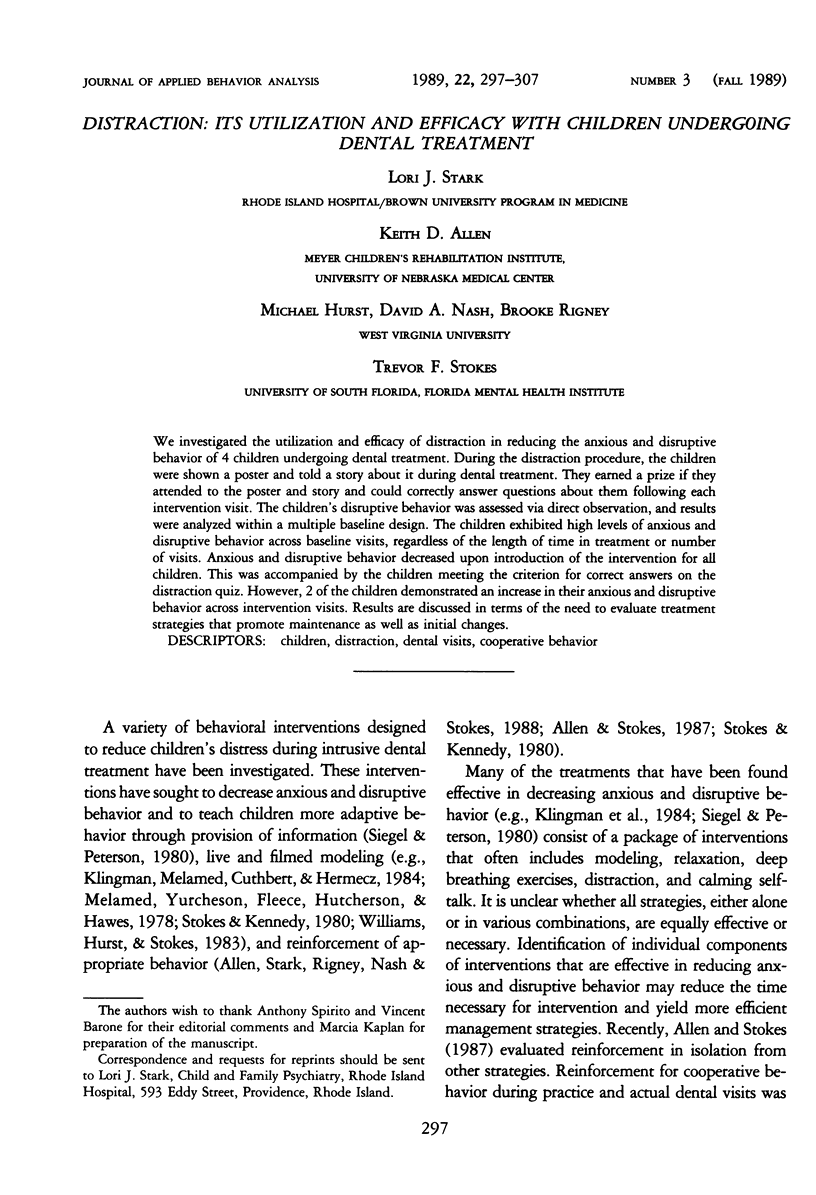
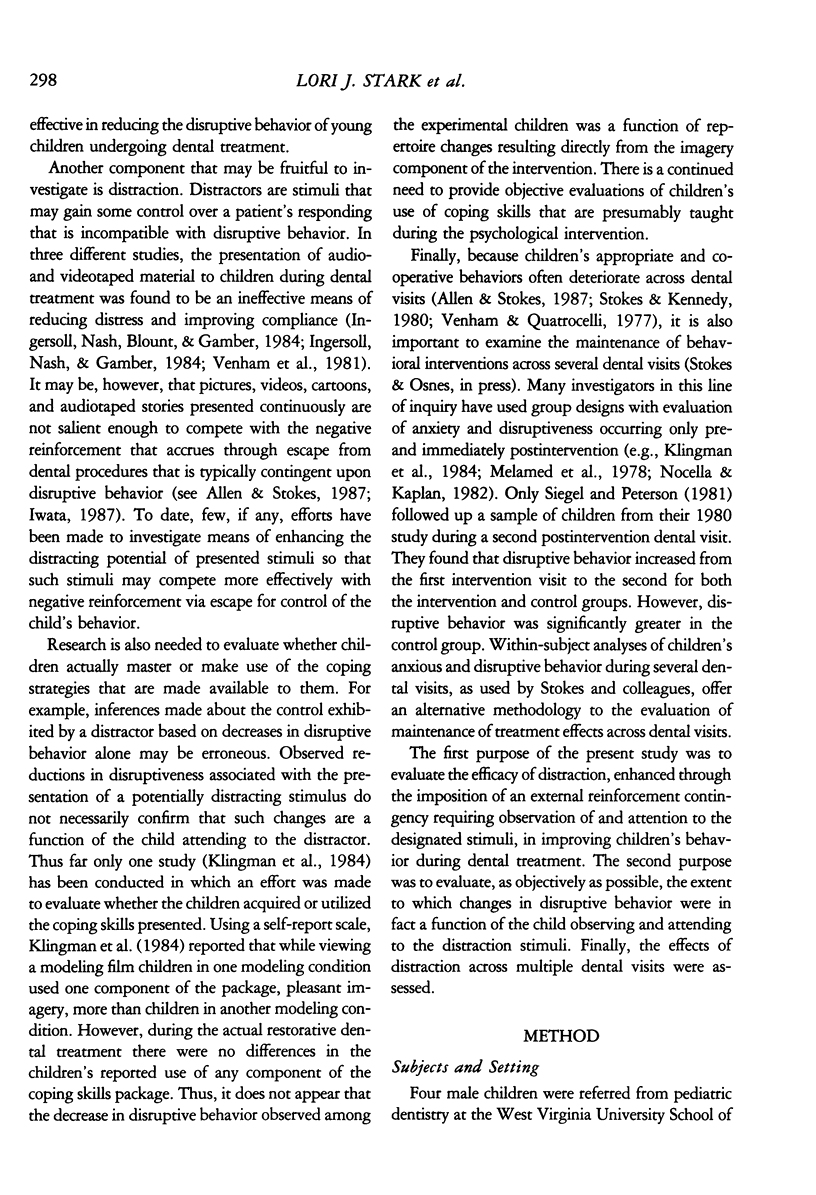
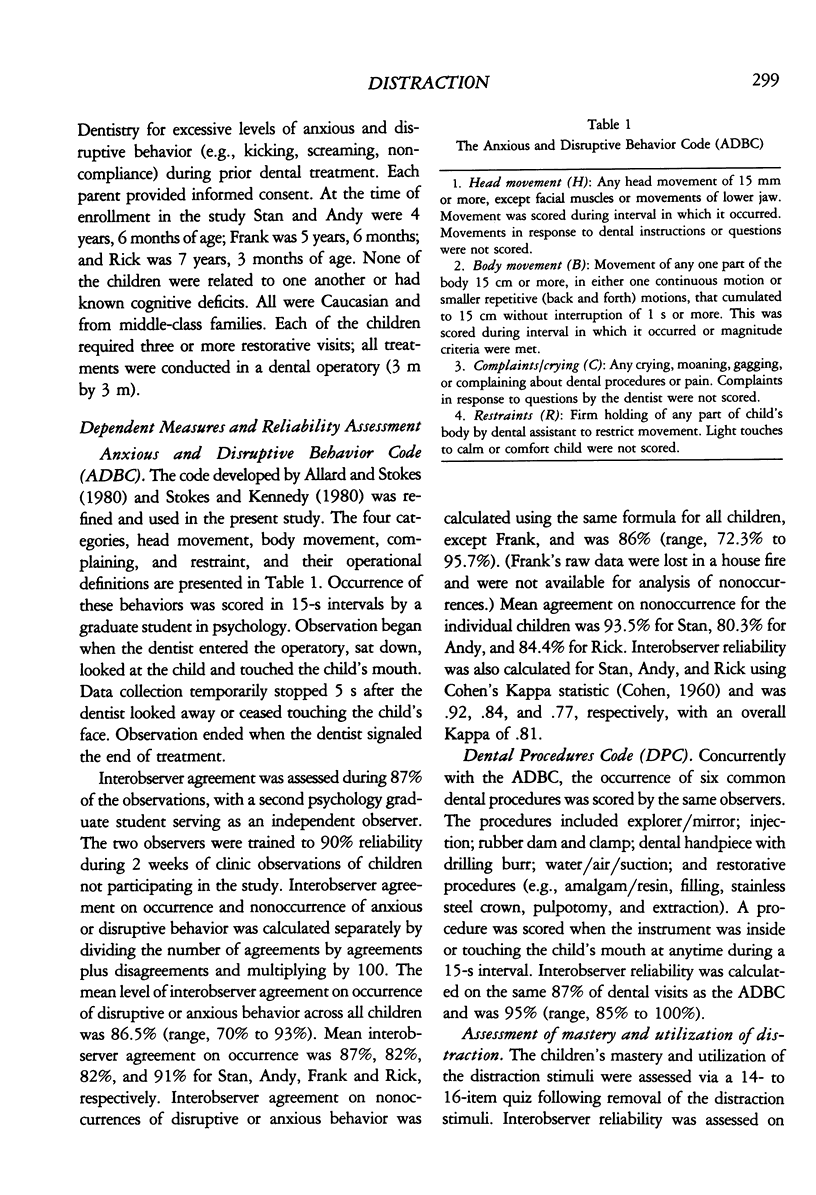

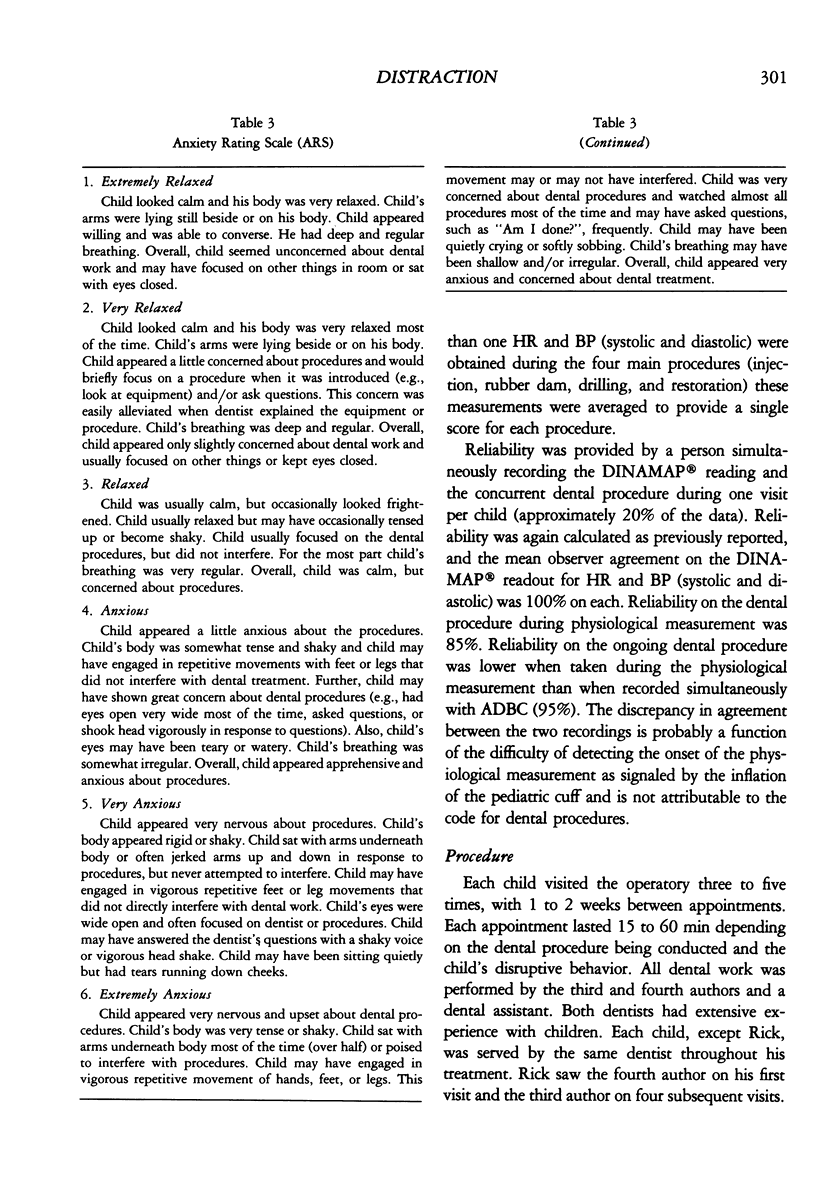
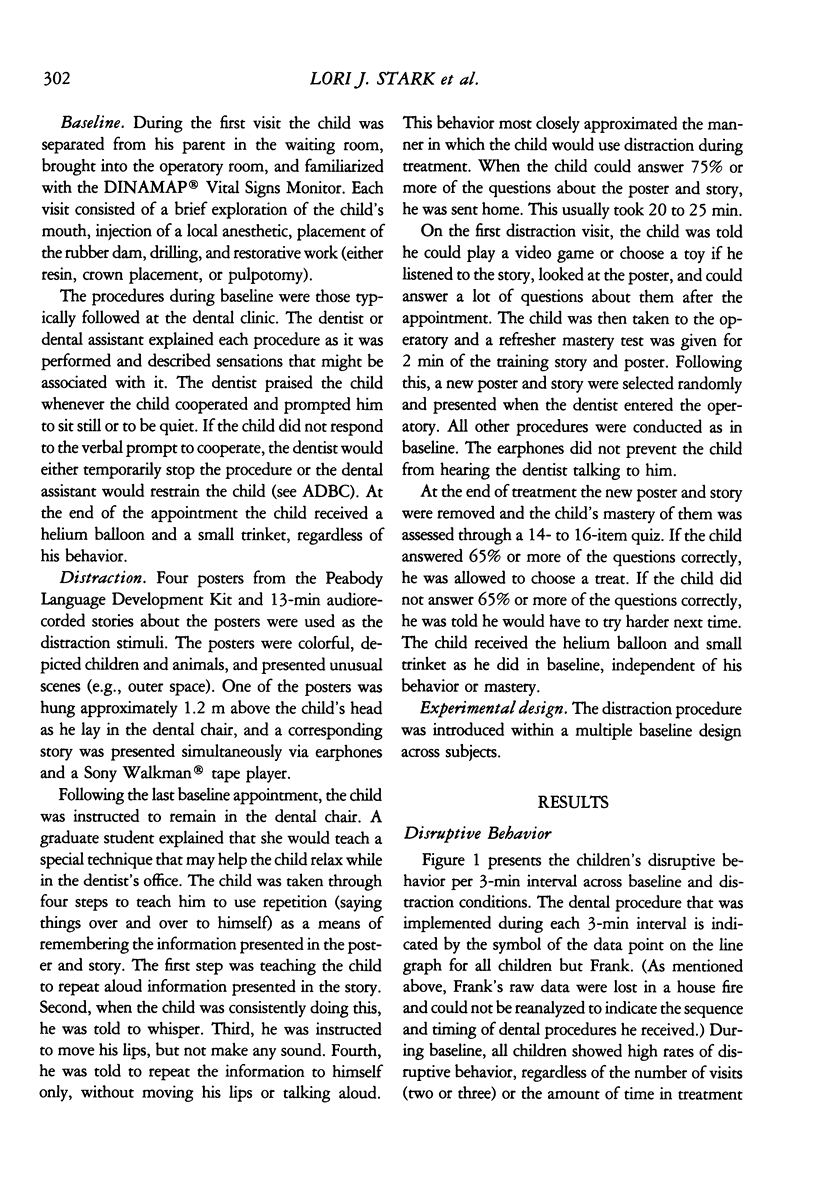
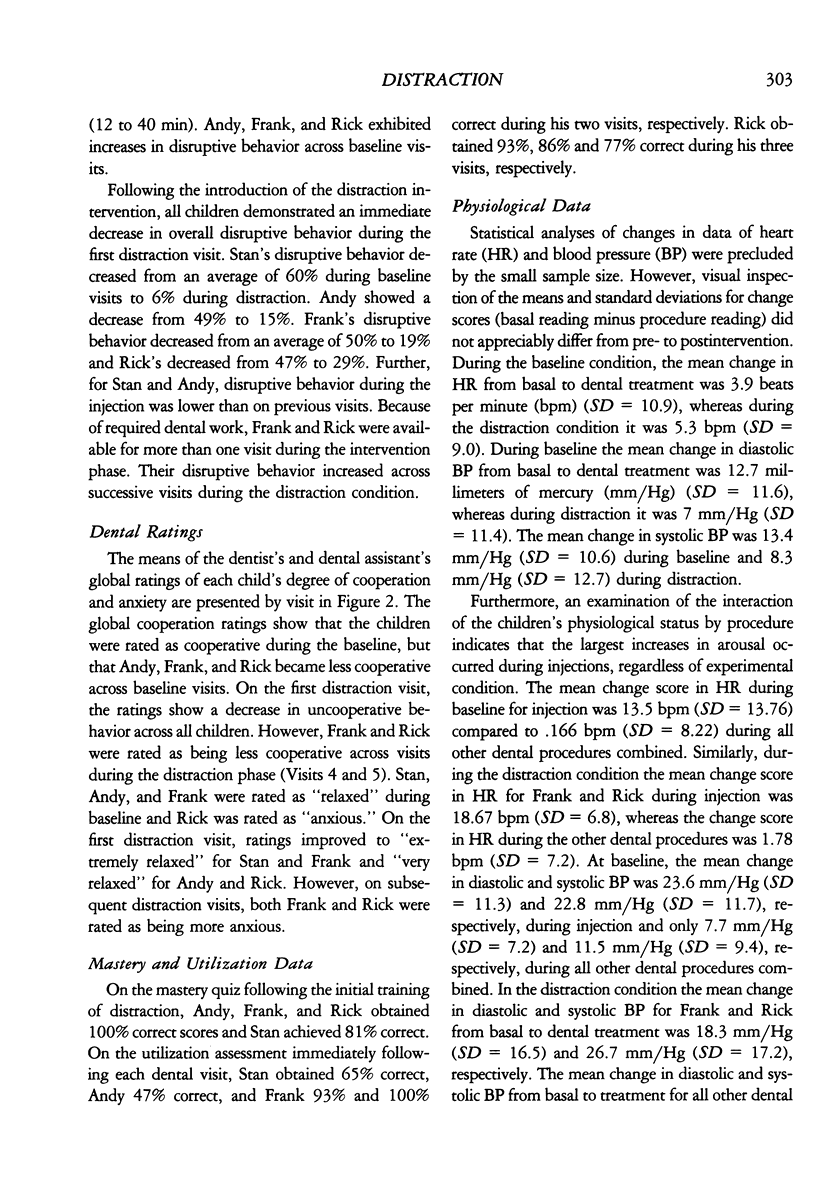
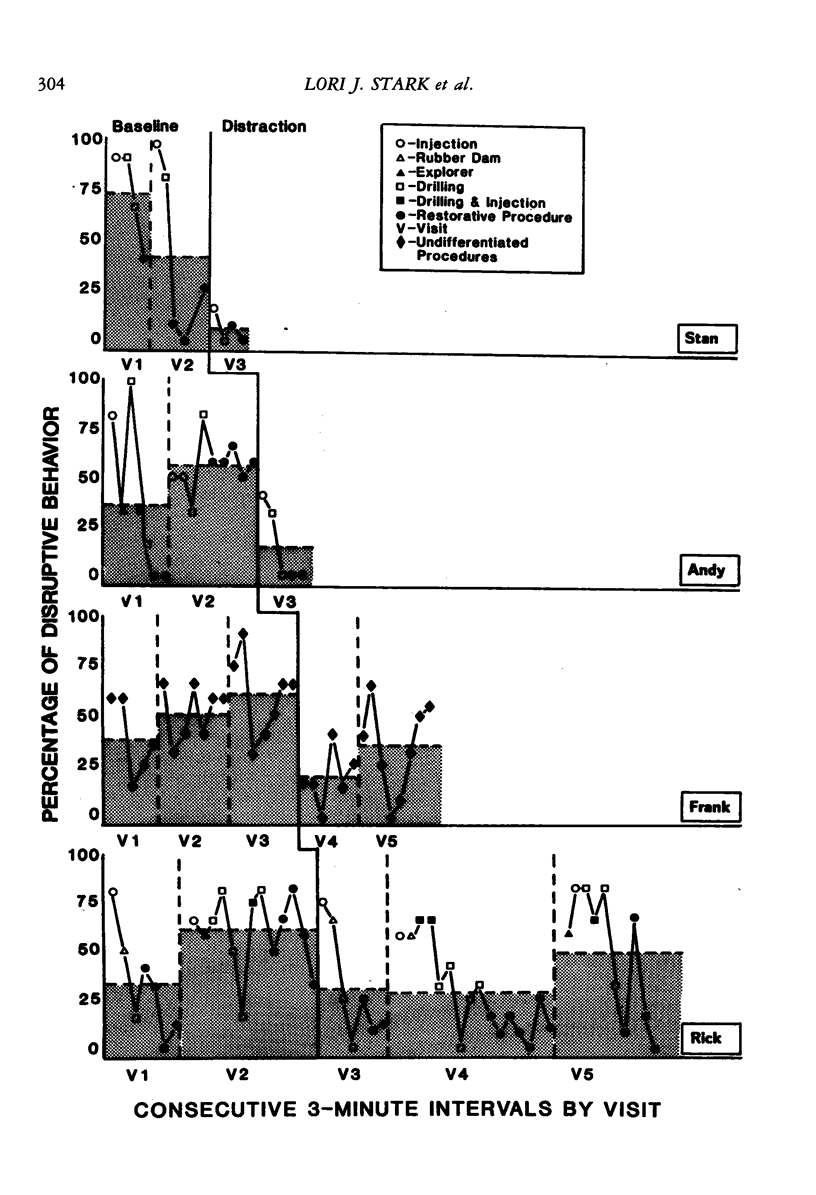
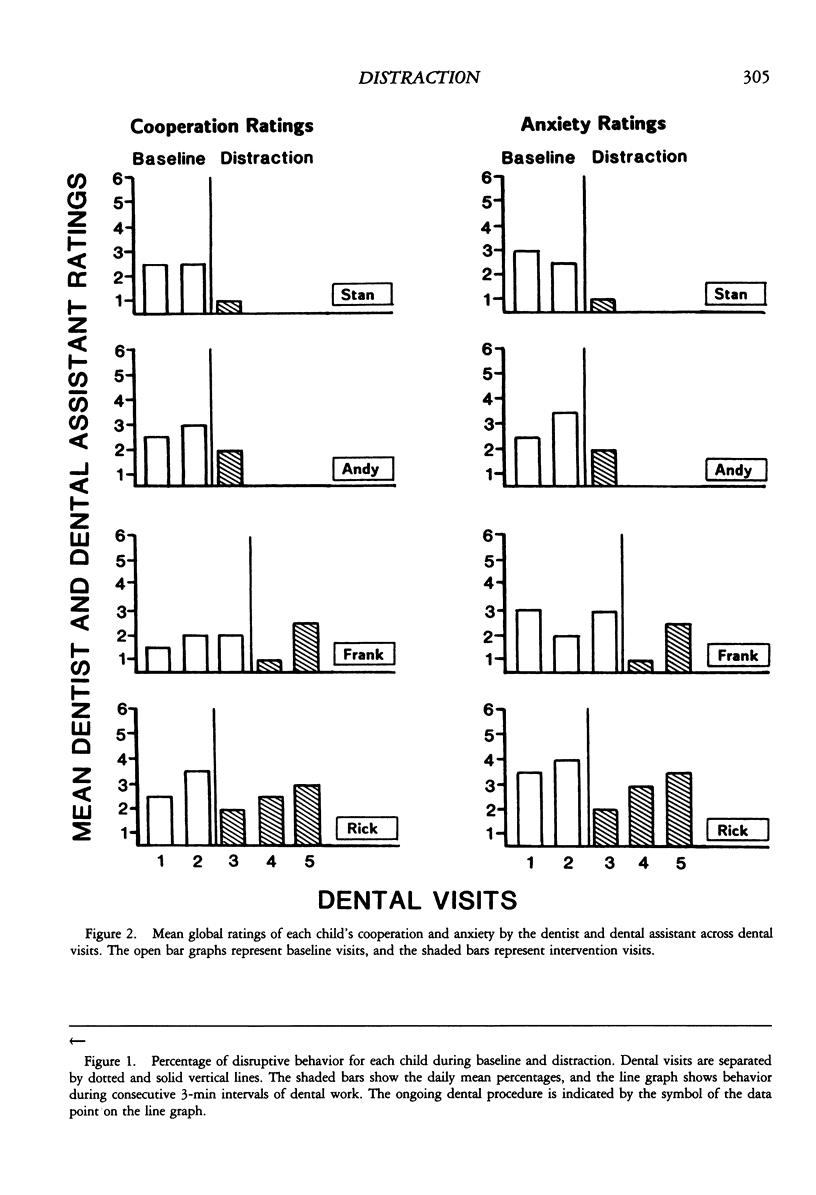
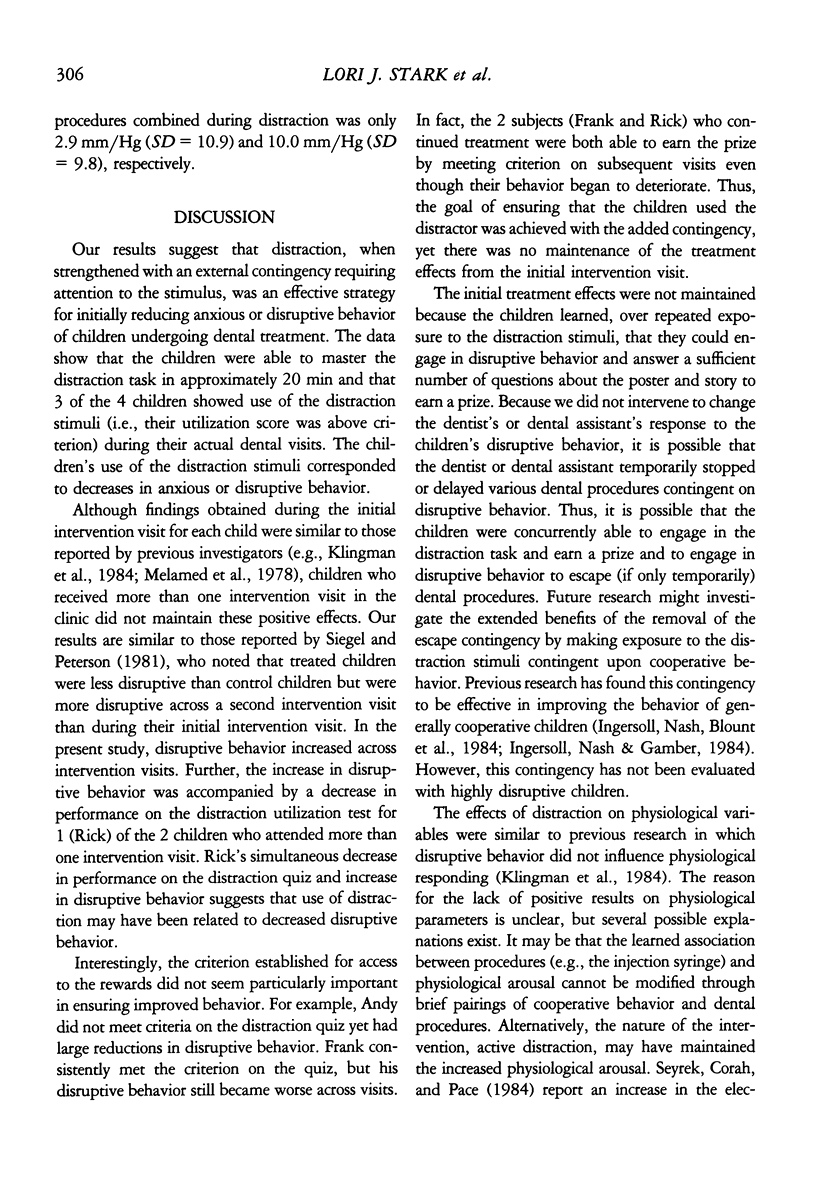

Selected References
These references are in PubMed. This may not be the complete list of references from this article.
- Allard G. B., Stokes T. F. Continuous observation: a detailed record of children's behavior during dental treatment. ASDC J Dent Child. 1980 Jul-Aug;47(4):246–250. [PubMed] [Google Scholar]
- Allen K. D., Stark L. J., Rigney B. A., Nash D. A., Stokes T. F. Reinforced practice of children's cooperative behavior during restorative dental treatment. ASDC J Dent Child. 1988 Jul-Aug;55(4):273–277. [PubMed] [Google Scholar]
- Allen K. D., Stokes T. F. Use of escape and reward in the management of young children during dental treatment. J Appl Behav Anal. 1987 Winter;20(4):381–390. doi: 10.1901/jaba.1987.20-381. [DOI] [PMC free article] [PubMed] [Google Scholar]
- Ingersoll B. D., Nash D. A., Blount R. L., Gamber C. Distraction and contingent reinforcement with pediatric dental patients. ASDC J Dent Child. 1984 May-Jun;51(3):203–207. [PubMed] [Google Scholar]
- Ingersoll B. D., Nash D. A., Gamber C. The use of contingent audiotaped material with pediatric dental patients. J Am Dent Assoc. 1984 Nov;109(5):717–719. doi: 10.14219/jada.archive.1984.0170. [DOI] [PubMed] [Google Scholar]
- Iwata B. A. Negative reinforcement in applied behavior analysis: an emerging technology. J Appl Behav Anal. 1987 Winter;20(4):361–378. doi: 10.1901/jaba.1987.20-361. [DOI] [PMC free article] [PubMed] [Google Scholar]
- Klingman A., Melamed B. G., Cuthbert M. I., Hermecz D. A. Effects of participant modeling on information acquisition and skill utilization. J Consult Clin Psychol. 1984 Jun;52(3):414–422. doi: 10.1037//0022-006x.52.3.414. [DOI] [PubMed] [Google Scholar]
- Melamed B. G., Yurcheson R., Fleece E. L., Hutcherson S., Hawes R. Effects of film modeling on the reduction of anxiety-related behaviors in individuals varying in level of previous experience in the stress situation. J Consult Clin Psychol. 1978 Dec;46(6):1357–1367. doi: 10.1037//0022-006x.46.6.1357. [DOI] [PubMed] [Google Scholar]
- Nocella J., Kaplan R. M. Training children to cope with dental treatment. J Pediatr Psychol. 1982 Jun;7(2):175–178. doi: 10.1093/jpepsy/7.2.175. [DOI] [PubMed] [Google Scholar]
- Seyrek S. K., Corah N. L., Pace L. F. Comparison of three distraction techniques in reducing stress in dental patients. J Am Dent Assoc. 1984 Mar;108(3):327–329. doi: 10.14219/jada.archive.1984.0034. [DOI] [PubMed] [Google Scholar]
- Siegel L. J., Peterson L. Stress reduction in young dental patients through coping skills and sensory information. J Consult Clin Psychol. 1980 Dec;48(6):785–787. doi: 10.1037//0022-006x.48.6.785. [DOI] [PubMed] [Google Scholar]
- Stokes T. F., Kennedy S. H. Reducing child uncooperative behavior during dental treatment through modeling and reinforcement. J Appl Behav Anal. 1980 Spring;13(1):41–49. doi: 10.1901/jaba.1980.13-41. [DOI] [PMC free article] [PubMed] [Google Scholar]
- Venham L. L., Goldstein M., Gaulin-Kremer E., Peteros K., Cohan J., Fairbanks J. Effectiveness of a distraction technique in managing young dental patients. Pediatr Dent. 1981 Mar;3(1):7–11. [PubMed] [Google Scholar]
- Venham L., Quatrocelli S. The young child's response to repeated dental procedures. J Dent Res. 1977 Jul;56(7):734–738. doi: 10.1177/00220345770560070501. [DOI] [PubMed] [Google Scholar]
- Williams J. A., Hurst M. K., Stokes T. F. Peer observation in decreasing uncooperative behavior in young dental patients. Behav Modif. 1983 Apr;7(2):225–242. doi: 10.1177/01454455830072007. [DOI] [PubMed] [Google Scholar]


